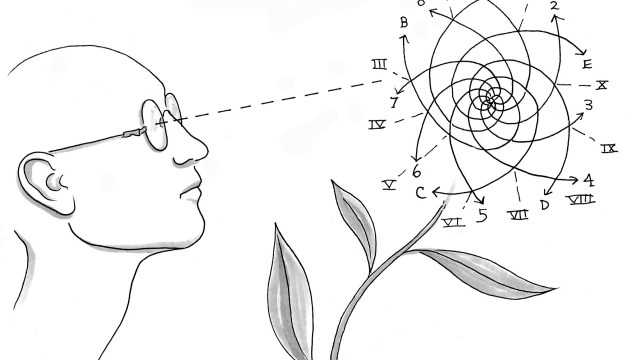Ask Ethan: How can we see so far away in such a young Universe?
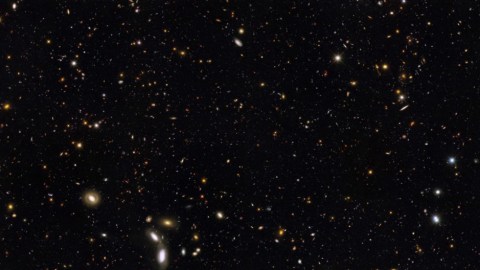
46 billion light years in all directions in just 13.8 billion years? Here’s how it’s done!
“They say the universe is expanding. That should help with the traffic.”
–Steven Wright
There are a few fundamental facts about the Universe — it’s origin, it’s history, and what it is today — that are awfully hard to wrap your head around. One of them is the Big Bang, or the idea that the Universe began a certain time ago: 13.8 billion years ago to be precise. That’s the first moment we can describe the Universe as we know it to be today: full of matter and radiation, and the ingredients that would eventually grow into stars, galaxies, planets and human beings. So how far away can we see? You might think, in a Universe limited by the speed of light, that would be 13.8 billion light years. But it’s not, and Mark Hertzberg wants to know why:
How can we look at a segment of space 92 Billion miles across when light from each edge only had 13.7 billion years to travel? Even assuming you mean those points would have moved away farther during the travel time and we are calculating where they would be rather than what we see, and include that at that distance space can be expanding faster than c, the numbers still seem high.
There are three ways we can choose to think about this problem, but only one is right.
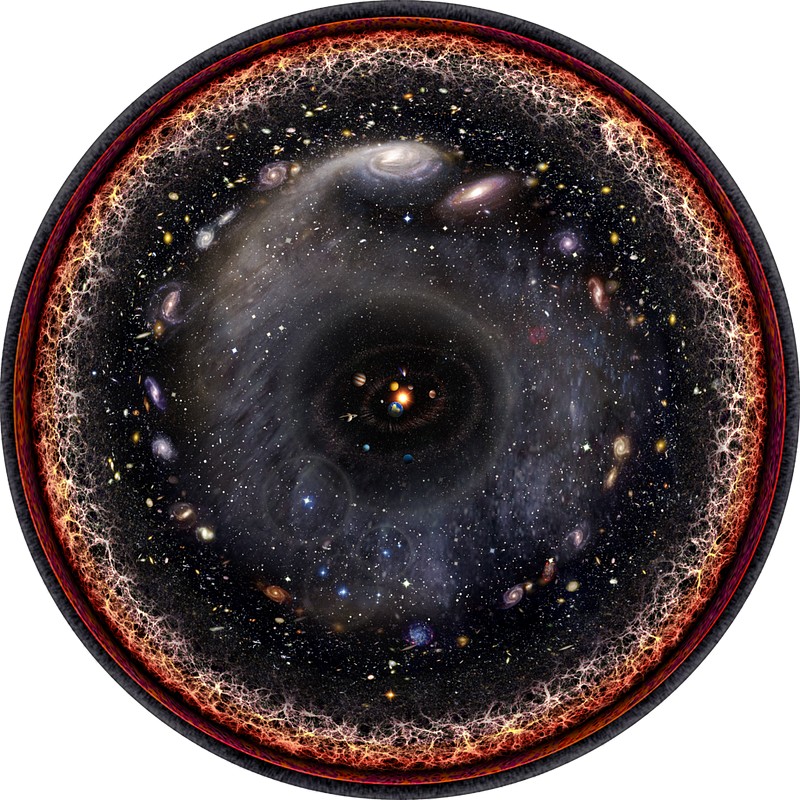
1.) Stuff is everywhere, and light travels at the speed of light. This is the “default” mode most people have. You can imagine a Universe that’s full of stars and galaxies everywhere we look, and that these stars and galaxies began forming pretty close to the very beginning of everything. Therefore, the longer we wait, the farther we can see, as light travels in a straight line at the speed of light. So after 13.8 billion years, you’d expect to be able to see back almost 13.8 billion light years, subtracting only how long it took stars and galaxies to form after the Big Bang.
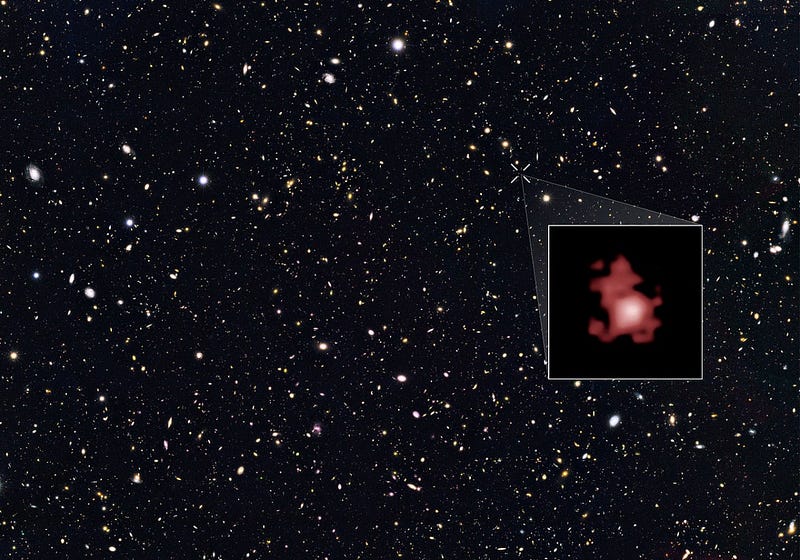
2.) Stuff is everywhere, light moves at c, and everything can move through space. This adds another layer to the problem; not only is there a ton of stuff that emits light, but those light-emitting objects can move relative to one another. Since they can move up to (but not quite at) the speed of light, by the rules of special relativity, while the light moves towards you at the speed of light, you can imagine seeing twice as far as in the first case. Perhaps the objects now could be as far as 27.6 billion light years away, assuming their light just reaches us now and they speed away from us at almost the speed of light.
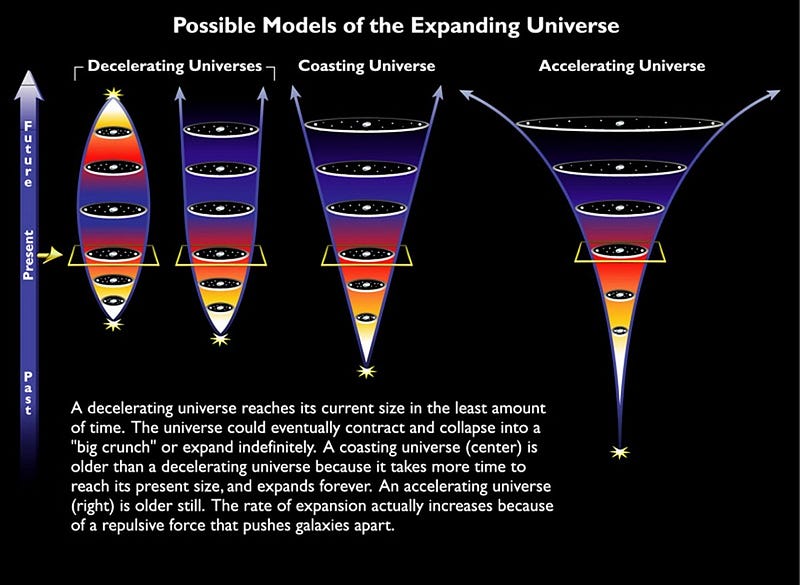
3.) Stuff is everywhere, light goes at c, stars and galaxies move, and the Universe is expanding. This last layer is the counterintuitive one that most people have the hardest time with. Yes, space is full of matter, which quickly clumps into stars, galaxies and even larger structures. Yes, the light it produces all moves at c, the speed of light in a vacuum. Yes, all of this matter can move through space, mostly due to the mutual gravitational attraction of different overdense and underdense regions on one another. All of that is true, just as it was in the second scenario.

But there’s something extra, too. It’s that space itself is expanding. When you look out at a distant galaxy, and see that galaxy is redder than normal, the common way of thinking about it is that the galaxy is red because it’s moving away from us, and hence the light is shifted to longer (redder) wavelengths the same way a siren moving away from you has its sound shifted to longer wavelengths and lower pitches. But that’s still part of explanation #2; General Relativity adds that extra element in of space expanding. And as the Universe expands, the fabric of space stretches, and those individual light waves in that space see their wavelengths stretch as well!
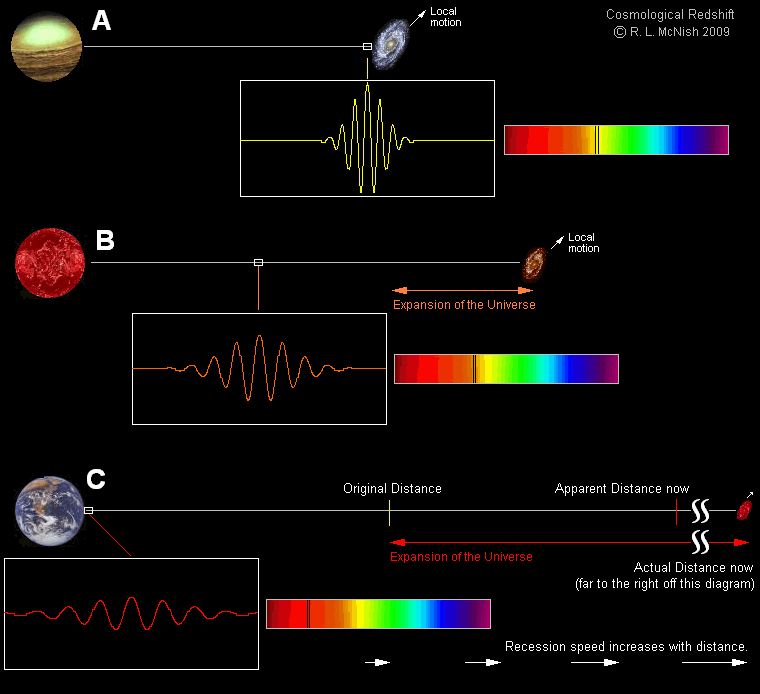
You might think it’s impossible to tell these two effects apart. If all you can measure is the wavelength of the light as it reaches your eye, how can you tell whether it’s due to motion or due to the fabric of space? As it turns out, there’s a relationship that exists between the redshift (and hence the wavelength) and the observed brightness of the galaxy, which is a function of distance. In a non-expanding Universe, as we covered earlier, the maximum distance we can observe is twice the age of the Universe in light years: 27.6 billion light years. But in the Universe we have today, we’ve already observed galaxies more distant than that!
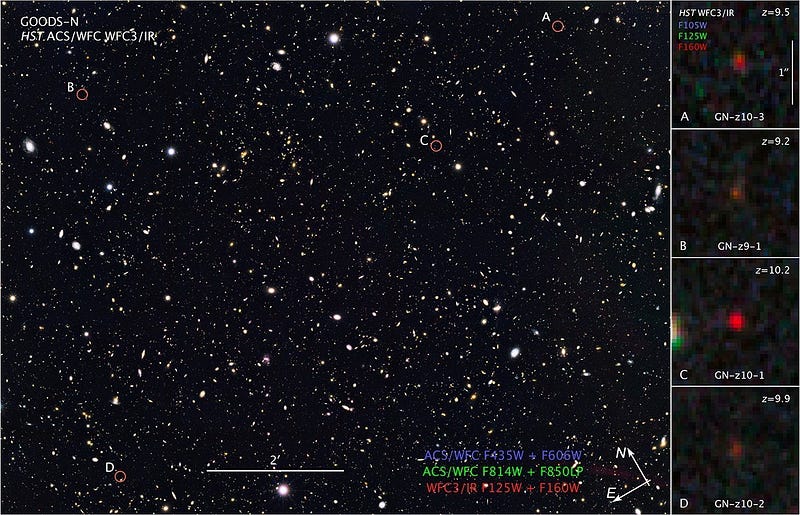
So how far can we see in any direction? If the Universe had no dark energy in it at all, the farthest objects — stars, galaxies, the leftover glow from the Big Bang, etc. — would be limited to 41.4 billion light years. (The relativistic derivation of that figure, that R = 3ct, ought to be a familiar result to those who took General Relativity in graduate school.) But in a Universe with dark energy, that gets pushed out to an even greater number: 46 billion light years for the observed dark energy our cosmos possesses.
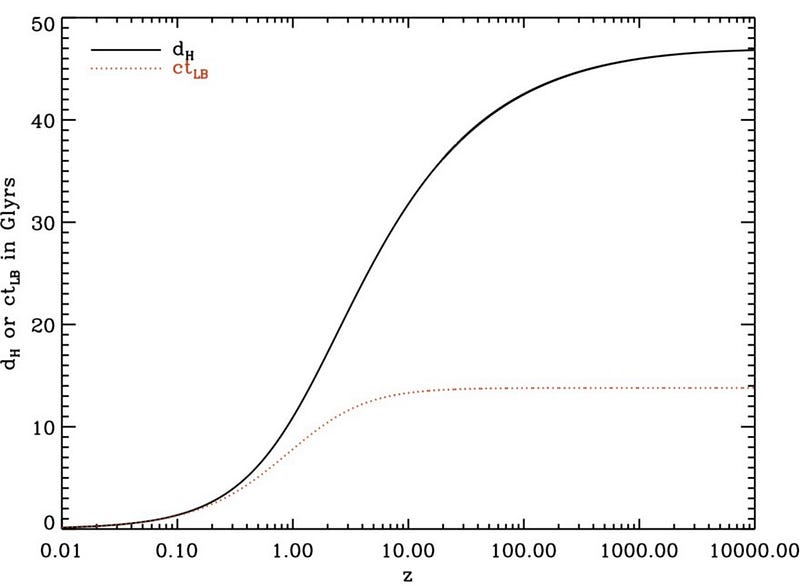
Put that all together, and this means the distance we can see in the Universe, from one distant end to the other, is 92 billion light years across. And don’t forget: it’s continuing to expand! If we left today at the speed of light, we could only reach about a third of the way across it: approximately 3% of its volume.
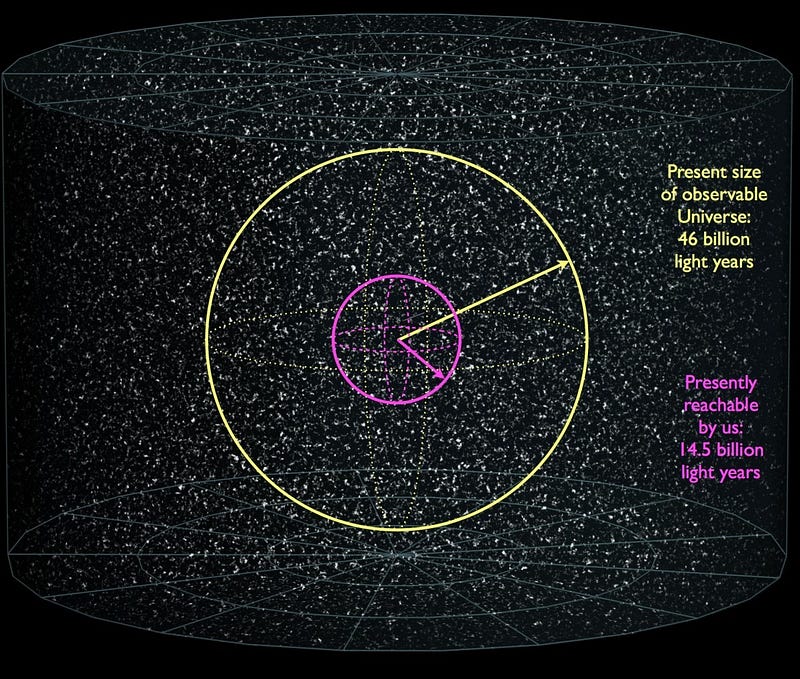
And so 92 billion light years might seem like a large number for a 13.8 billion year old Universe, but it’s the right number for the Universe we have today, full of matter, dark energy and obeying the laws of General Relativity. The fact that space itself is expanding, and that new space is constantly getting created in between the bound galaxies, groups and clusters in the cosmos, is how the Universe got to be as big as it is to our eyes. Given what’s in it, what governs it and how it came to be, it couldn’t have turned out any other way.
This post first appeared at Forbes, and is brought to you ad-free by our Patreon supporters. Comment on our forum, & buy our first book: Beyond The Galaxy!





